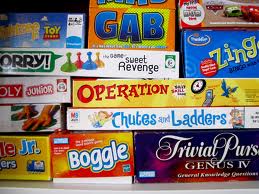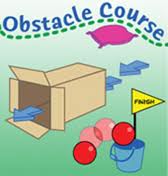Back in April I taught a two-week course on game design to a classroom of twelve high school students. I was awed by their talent, their intelligence, their unique perspectives, and their commitment to creation. But one thing stuck out to me more than anything else.
Every single student was under the misconception that games are only fun on digital devices.

Most students’ favorites are video games, not board games.
As an introductory exercise, I asked each student to tell me his or her favorite game. Every game was either a phone, Xbox, or video game. So we went around the circle again, and this time I asked for favorite non-digital (“real life”) games. This time, every student named a physical activity. Try as I might, I could not get a single answer of Risk, Monopoly, or Trivial Pursuit.
I wasn’t surprised. A gamer myself, I first enjoyed Settlers of Catan in college, and I never even attempted Trivial Pursuit until I had experienced bar Trivia games.
Why are we bored?
When I asked the students what was wrong with board games, I got a series of answers, which I’ll share here.
“My mom makes me play those.” In other words, if we force the “educational” aspect, we can actually manage to make games not-fun!
“I’m not good at them/don’t understand those games.” So, digital games have an easier point of entry.
“It’s just the same thing over and over.” In other words, the game does not make for a good playmate.
With this in mind, I gave the students their first assignment: to create a fun, engaging board game.
Making it fun
Immediately, the complaints began, with one chief among them: “but I wanted to make a digital game, so it would be fun!” I challenged the students by telling them a theory I have had for a very long time: if you can’t make a fun game, then you can’t make a fun digital game.
Faced with the option to either admit defeat or prove that their games were worthy of becoming digital, I suddenly had a buzzing classroom. At the end of the day we played each game. I’ll review one particularly challenging game, and one particularly successful game.
 The first, based on the game of Life (which none of the students had heard of until they began their research) might be considered a traditional board game. The players had currency, which they were able to spend. Then, based on the results of their choices, the players could make further choices. Although the students struggled with how to make it more fun, they acknowledged that it would be a difficult digital game to make enticing as well – it relied heavily on visuals, which they had created on paper, but that alone wasn’t enough to make it engaging.
The first, based on the game of Life (which none of the students had heard of until they began their research) might be considered a traditional board game. The players had currency, which they were able to spend. Then, based on the results of their choices, the players could make further choices. Although the students struggled with how to make it more fun, they acknowledged that it would be a difficult digital game to make enticing as well – it relied heavily on visuals, which they had created on paper, but that alone wasn’t enough to make it engaging.
 The second game was envisioned as a fast motion casual game. When I asked them to translate it into real life, they made a timed obstacle course, where the player had to pick up items along the way to collect bonus points. It was (as you might expect) great fun, and they were also easily able to make it into an engaging and educational phone game.
The second game was envisioned as a fast motion casual game. When I asked them to translate it into real life, they made a timed obstacle course, where the player had to pick up items along the way to collect bonus points. It was (as you might expect) great fun, and they were also easily able to make it into an engaging and educational phone game.
Why does it matter?
It matters because too many teachers, parents, and administrators are making the same mistake my students made. Too many people are assuming that digital means fun, and paper work is busy work. Sadly, digitizing education is not the same as gamifying it.
Of course, that doesn’t mean we should stop trying. As education is moving to be more and more digital, we have an incredible opportunity to explore new ways of engaging students. We just have to remember that the goal is to be engaging, not just to be digital.

Leave a Reply